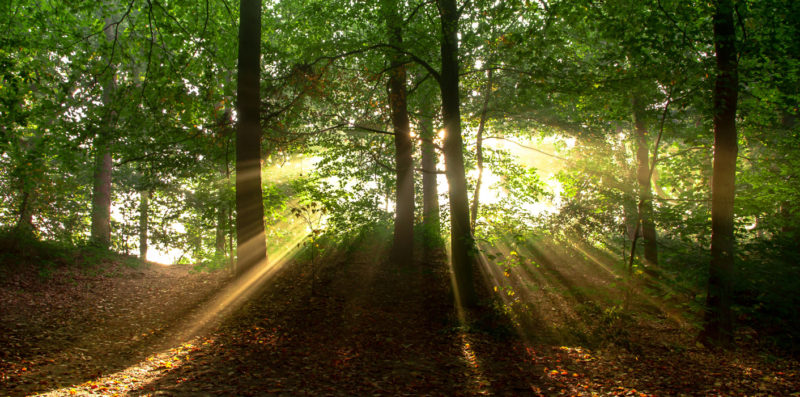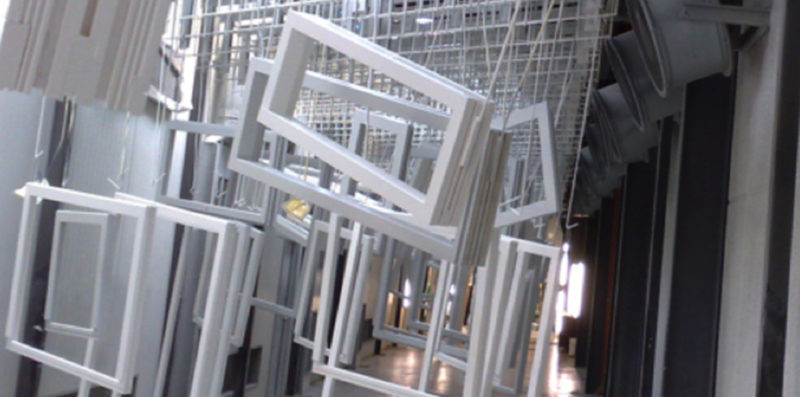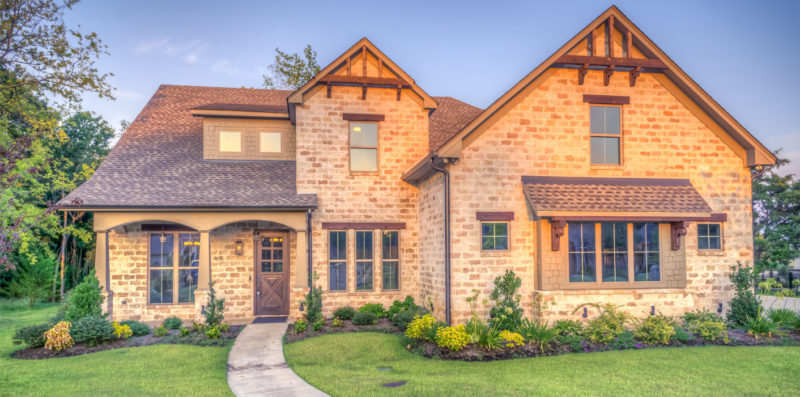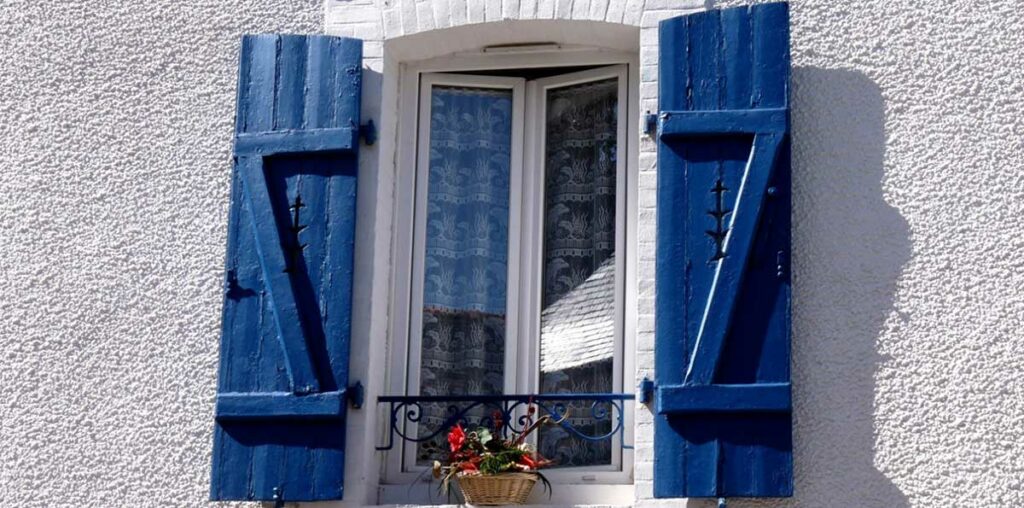
uPVC or PVCu as it is now more commonly known (to conform with Europe) has seemingly, over the years,
become the de facto material for window and door frames. This is especially apparent in new build housing
developments. Some homeowners, however, in particular those living in conservation areas, have always realised
the benefits of natural materials over man-made.
Here’s our 7 reasons for choosing timber over PVCu
- Wooden frames are very eye catching and look stunning on any property. Moreover you can choose to tailor
your timber frames for windows by selecting from a large variety of woods like maple, mahogany or oak all of
which come with a different look. Wooden window frames can also be carved, stained or painted to suit your
taste and to conform to the look of the house. - Windows with wooden frames are much more environment friendly compared to PVCu. They actually come
with a negative GWP (global warming potential) which implies that over their long period of service they are
capable of reducing the Co2 amount from the atmosphere. Whereas PVCu production involves the release of
very poisonous chemicals, of which six have been listed by the governments of Europe for priority elimination.
Using wood from sustainable sources makes this window framing option by far the most environmentally friendly
of all. - Timber window frames could potentially last for many years to come while your average PVCu windows would
probably last less than 30 years. When maintained properly your wooden windows can efficiently resist wear and
tear and last for a lifetime. - Timber being one of the masterstrokes of nature acts as a natural insulator which keeps the temperature of
your house comfortable. Wood is naturally insulating which helps in retaining the heat within your house. This in
turn also lowers the emissions of carbon and therefore reduces your electricity bill while keeping your household
warm and comfortable. - Although wooden window frames require regular maintenance and weatherproofing to keep them in tip top
condition, painting and varnishing not only keeps them looking attractive but also helps resist the elements of
nature.
Contrary to popular belief, window frames made out of PVCu are not at all maintenance free and a PVCu window
cannot be repaired so easily. - It takes about eight times more energy to create a PVC window frame than a timber one. Environment activists
are plagued by the concern that PVC waste would elevate to 6.4 million tonnes by the year 2020. 43% more
waste is generated by PVC windows than timber windows. Out of this about 82% goes into landfill and 15% is
incinerated. Only 3 % of the waste is recycled. - High performance timber windows are not necessarily more expensive than their PVCu counterparts. Since
they come in many different kinds you get a lot of choice. While maple is the cheapest wood for windows,
mahogany is the costliest. Moreover when you choose a classic window frame for your home you can be rest
assured that they are going to last far longer than PVCu.

Why Choose Timber Windows?
People in the UK like timber windows and doors, yet many have switched to PVC. Why? Well, according to many
salesmen, PVC doesn’t rot like wood, it’s cheaper and of course it doesn’t need painting. Sounds great but before
you rush off to place your order, in this, my first blog post; I’m going to challenge that wisdom.
I am a Norwegian living in the UK. In Norway we have lots of woodland and extremely cold winters. So, over the
years we’ve become pretty adept at using our plentiful natural resources to keep us warm; but more importantly
as an efficient building material.
Throughout Norway very few homes feature PVC windows. This is because wood, by its very nature is a natural
barrier to the cold. When cleverly designed and engineered into a window or door, and combined with double or
triple glazing, it far outperforms PVC windows and doors. So why is PVC so popular in the UK? The story is
complex, but for many the experience of rotten timber windows relates to those installed in houses after the
Second World War. Have you ever noticed how many houses built over a century ago still have their original
windows? This is because they were made using well-seasoned, high quality timber. By stark contrast, many
buildings built during the post war period were constructed using inferior materials. Consequently timber gained
itself a bad reputation.
So what’s the modern day truth?
Currently around 12 million windows of all types are sold each year in the UK, with timber windows accounting
for 30% of that market. 57% of timber windows sold in Britain are used by the public sector and 42% by the
private; 86% of these in refurbishment projects and 14% for new build applications. (Figures from FSC website.)
Whilst Norwegian windows and doors have always used high quality materials, over the last 10 years in
particular, the evolution of timber windows in terms of quality, durability and design has been dramatic. Factory
finished and treated against rot, with frames which are fully protected from water and UV light; modern highperformance timber windows can have finish guarantees for up to 10 years, and rot free guarantees for up to 30.
Dual sealing and factory glazing helps to maximize the life of a unit, and sophisticated design details further
lengthen the life of the timber.
Comparing this to PVC units, The National Building Federation’s Standards in Quality and Development gives
PVC windows a lifespan expectancy of 20 to 25 years; where as it gives vacuum treated softwood windows 25 to
35 years. According to the Green Builders Digest, ‘Well designed and well maintained timber windows can and do
last the lifetime of the building in which they are installed’.
Maintenance is the challenge for many people, but no material is maintenance-free, despite claims by PVC
salesmen. Developments in timber window design and finish has created products that minimize water retention,
damp penetration, and with micro-porous paints that allow wood to breathe; all contribute to a low maintenance
product. Peeling and blistering paint is a thing of the past. Factory-finished windows need not be repainted for up
to 8 years. Thereafter 5 to 8 year painting cycles is the norm. Modern finishes also minimize the preparation
times. Unlike PVC, your factory finished timber windows and doors can be made to an exact shade of colour to
suit your project and property. So, while it remains true that timber windows need some maintenance, modern
high performance windows make that maintenance exceptionally easy.
While the initial cost of timber windows can be higher than that of other materials, the ‘whole-life’ cost which
timber delivers in terms of maintenance, durability and environmental impact, makes it excellent value for money.
To substantiate the value for money claim The National Housing Federation finds softwood cheaper, both in
terms of initial capital costs and life cycle costs over a period of 30 years. Figures from its reports, ‘Standards in
Quality and Development’, put the cost of buying, fitting and maintaining a softwood window frame at between
£149 and £199 over 30 years. In contrast a PVC frame will cost between £257 and £275.
A further cost advantage to wood windows is the ability to repair and restore them. According to TRADA, the
Timber Research and Development Association, wood can be readily repaired, refreshed and maintained without
special components, skills or equipment.
Finally, timber is, of course, a natural insulator which when combined with the glazing system, (air, argon or
krypton filled), insulating glass and draught sealing, has no difficulty in providing windows which meet current
requirements of a U-value of as low as 0.6W/m2K.

In conclusion
Sourced from managed forests, mostly from my homeland of Scandinavia; timber is an environmentally friendly,
thermally efficient, good looking and low maintenance material. All of which is, happily, a far cry from the poor
reputation created by cheap, poor quality softwood windows and doors of the recent past.
For me, all of the above makes really good sense, and when it comes to windows and doors, nothing looks and
feels as good as wood.
Wooden Windows vs PVC-u Windows: Which to Choose?
Replacement windows are an important long-term investment. They can add value to your home, save on fuel
bills, reduce condensation, improve peace and quiet, and reduce the time you have to spend on maintenance.
Before taking the plunge it’s worth looking at whether you would be better off choosing wooden and plastic
windows. Here’s a comparison to help you make that decision.
Cost
PVC-u windows are almost always the cheaper option. However, they rarely offer the best value. Wooden
windows will last at least twice as long and they will also add value to your property – particularly if it’s a period
home.
Warranties
Wood windows typically come with have a 30-year warranty, whereas PVC-u windows typically have a 10-year
warranty.
Appearance
PVC-u replacement windows have spoiled the look of many period properties right across the country. Although
some PVC-u companies are now making better looking period windows, nothing looks or feels quite the same as
wood. With today’s wood windows, you can have authentic traditional details, such as joints, narrow glazing bars
and integral horns without sacrificing performance.
Modern wood windows, even when they are aluminium-clad, have a solidity and quality that are as important
inside the room as outside.
Energy-efficiency
Both wood and PVC-u replacement windows can give high levels of energy-efficiency. The strength of wooden
frames makes it easier to fit heavy triple-glazed units without ultra-thick sections.

Maintenance
Today’s windows, whether PVC-u or factory-finished wood are low maintenance. The only annual maintenance
they need is for the frames to be washed down and the hardware lubricated. Depending on exposure conditions,
factory finished wood windows will need an initial fresh coat of paint after about ten years; then at seven year
intervals. This brings them back to their original condition – and allows you to change the colour if you want to!
PVC-u windows, on the other hand, do not need to be re-coated but will gradually lose their finish. Wood windows
are also much easier to repair than PVC-u.
The environmental
Wood is the greenest choice of window material. Studies show its superiority across a range of environmental
impacts. Most significantly, for every Wood Window Alliance window you fit instead of a PVC-U window, you save
around 160kgs of carbon dioxide



